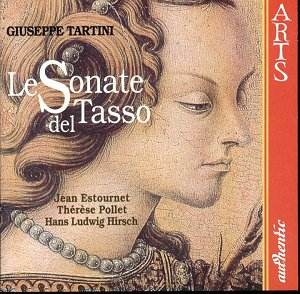All four of these sonatas
refer to the Aria del Tasso, which
is why they’ve been designated with
the name of ‘Tasso Sonatas’. Sonatas
XII, XV and XVII contain an aria from
the twelfth episode of Gerusalemme
liberate and XIX, after a series
of variations, seems to be derived from
it as well. They’re conjecturally dated
to around 1745-49 and it’s possible
that Tartini sent these "little
sonatas" to Berlin for publication.
In the autograph some of the bass parts
are missing, whilst others have been
inserted in another hand. Clearly some
editorial decisions were necessary for
this recording, made as long ago as
1986 and re(?)-released on Arts. They’ve
involved remaining true to the autograph
copy so those without a bass line stay
that way; those with a bass line have
used a harpsichord or a "speaking"
cello – Charles Burney’s word to describe
contemporary Italianate cello style.
They are little sonatas
indeed but in name only. Some movements
or the better parts of movements are
unaccompanied, such as the Aria of XV
and that speaking (vocalised) quality
Burney noticed in Italy and found so
characteristic is apparent in its sensitive
realisation. Tartini’s quality of compositional
compression is at its apex in the Aria
from Sonata XVII, a work in total of
no more than nine or so minutes. And
yet what a heroically complex movement
this is and how touched with intimate
withdrawal it seems in this fine performance.
The Furlana - for the trio - opens in
amplitude and completes a very fine
traversal. I enjoyed the humorous off-note
joke of the Allegro assai of the multi-movement
XIX Sonata though the greatest reserve
of feeling is to be found in the unaccompanied
Siciliana and in the charm and sheer
delicacy of the penultimate Menuet.
Fuller textures appear in such as the
Allegretto of XII.
These are thoughtful
and attractive performances with good
documentation as well. Some aspects
of the editorship may be conjectural
and the conjunction of unaccompanied
and the bass-added continuo may jar
but Tartini’s less well-known sonatas
will draw sympathetic listeners.
Jonathan Woolf


